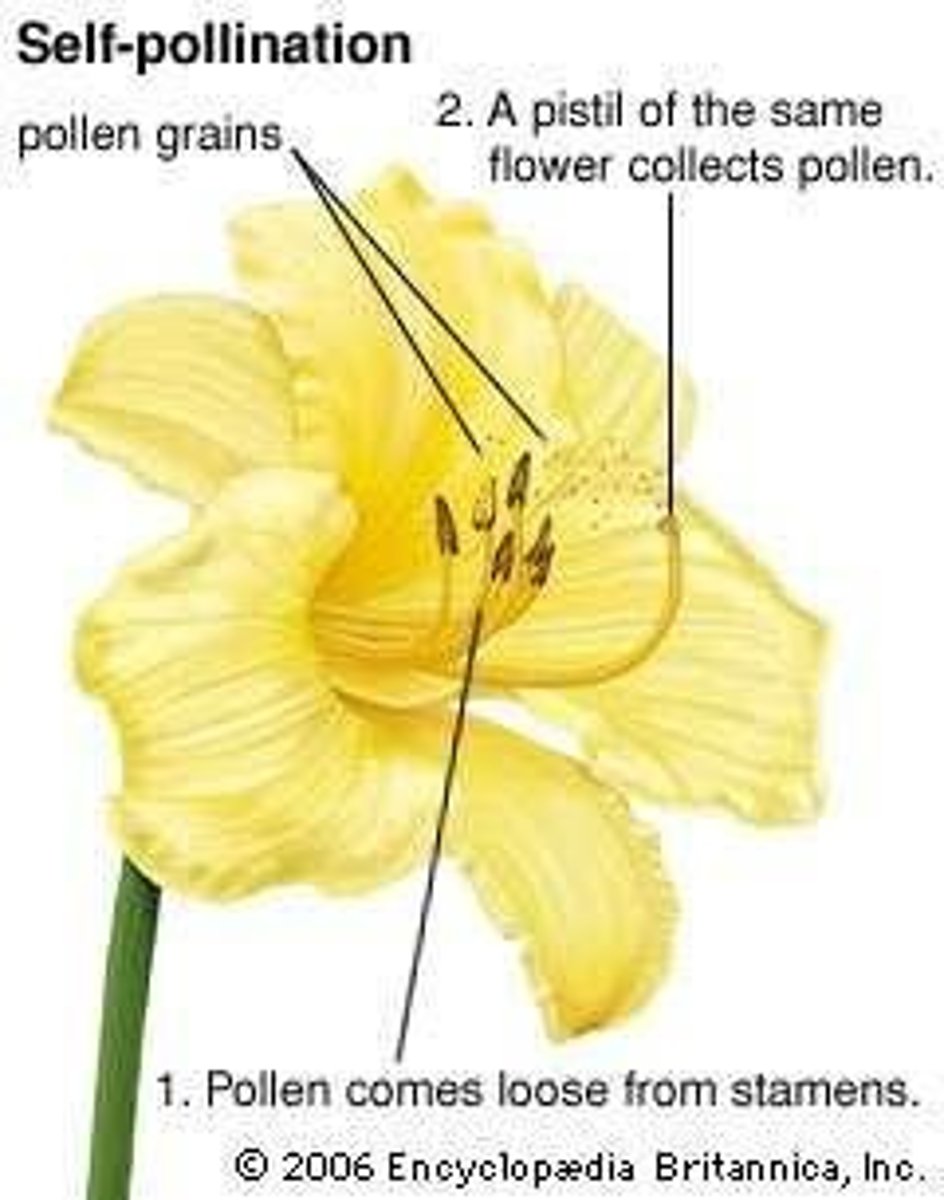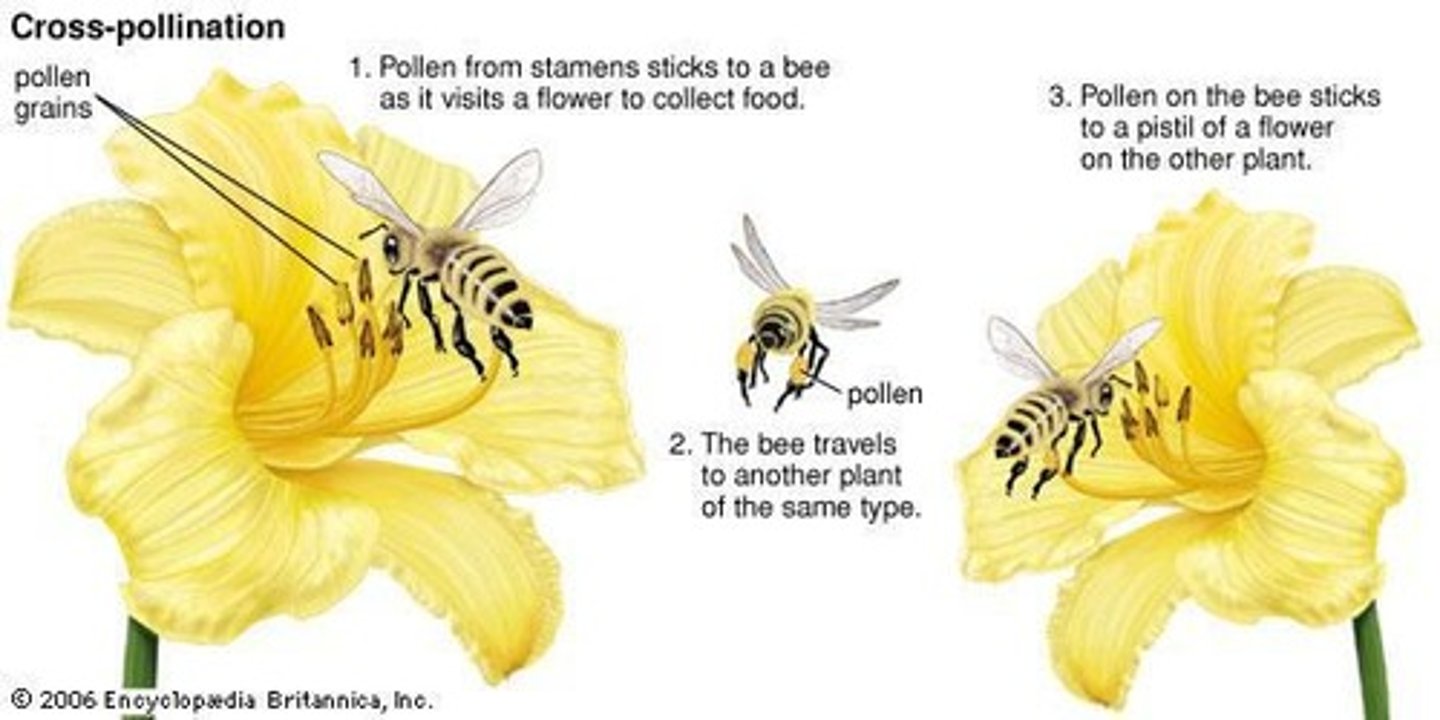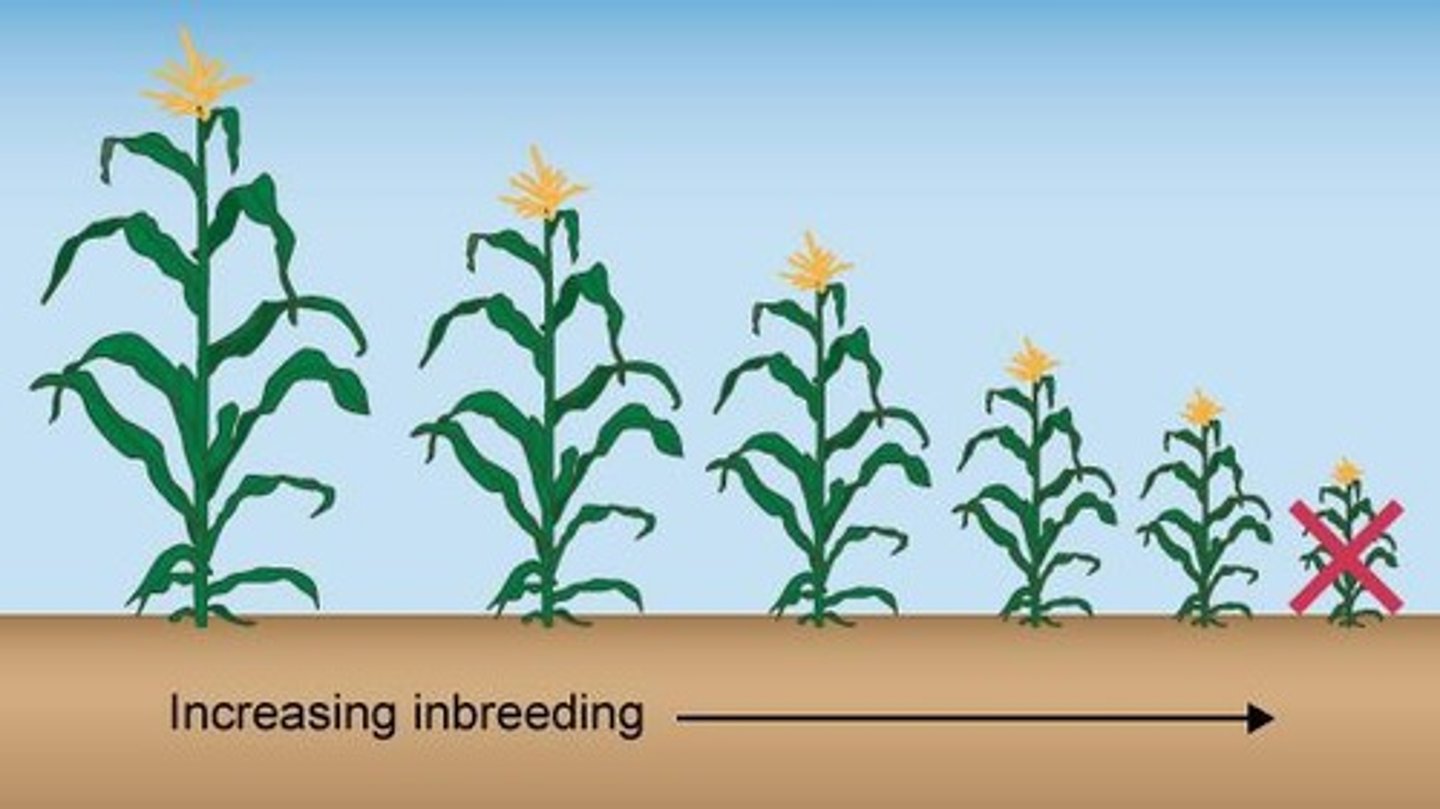Plant Reproductive Strategies: Self vs Cross Pollination, Seed Development, and Fruit Formation
1/43
There's no tags or description
Looks like no tags are added yet.
Name | Mastery | Learn | Test | Matching | Spaced |
|---|
No study sessions yet.
44 Terms
What is self-fertilization?
The transfer of pollen from the anther to the stigma in the same flower or between flowers on the same plant.

What is cross-pollination?
The transfer of pollen from one genetically distinct plant to the stigma of another, increasing genetic diversity in offspring.

What are the advantages of self-fertilization?
Widespread propagation of adapted genotypes, no need for wind or pollinators, and minimal metabolic costs.
What are the disadvantages of self-fertilization?
Inbreeding depression and loss of vigor due to restricted genetic diversity, which can lead to local extinction.

What are dioecious plants?
Plants that have either male or female flowers, promoting cross-pollination.
What are monoecious plants?
Plants that produce both male and female flowers on the same plant, often with asynchronous timing of anther and carpel development.
What is heterostyly?
A condition where perfect flowers have two morphs, preventing self-fertilization and promoting cross-pollination through different pollinators.
What is genetic incompatibility in plants?
A mechanism where pollen fails to fertilize if it matches an allele of the stigma, preventing self-fertilization.
What is the significance of S-genes in self-incompatibility?
S-genes determine the recognition of self in plants, leading to failure of pollen germination if there is a match.
What are the components of a seed?
An embryo, nutrients, and a protective coat.
How long ago did seed plants originate?
About 360 million years ago.
What is the oldest seed tissue ever recovered to grow a viable plant?
Silene stenophylla from 32,000-year-old seed tissue found in Siberian permafrost.
What role do seeds play in plant evolution?
Seeds allowed seed-bearing plants to become dominant producers in most terrestrial ecosystems.
What are the two main types of self-incompatibility mechanisms?
Gametophytic self-incompatibility and sporophytic self-incompatibility.
What is the function of the protective coat of a seed?
To safeguard the embryo and nutrients within the seed.
What is the advantage of seeds being able to disperse over long distances?
It allows plants to colonize new areas and adapt to different environments.
What percentage of plants are predominantly self-pollinating?
10-13% of plants.
What is the impact of limited genetic diversity in self-fertilizing plants?
It may lead to local extinction if environmental conditions change.
What is the role of insect pollinators in heterostyly?
They transfer pollen between individuals of different morph types, facilitating cross-pollination.
What is an example of a dioecious plant?
Cannabis, hops, or kiwi.
What is an example of a monoecious plant?
Corn, cucumbers, or squash.
What are seeds biologically considered?
Mature ovules that contain the embryonic plants of the next generation.
Why do plants produce large numbers of seeds?
To ensure the renewal of plant populations.
What is the role of fruit in flowering plants?
It serves as the packaging structure for the seeds.
What is the primary nutritional value of seeds and fruits?
They are the most important source of food for people and other animals.
What is the purpose of stored foods in seeds?
To help the embryo germinate and grow or to attract animals for seed dispersal.
What is germination?
The first step in the growth of the embryo, beginning with the uptake of water by the seed.
What is imbibition in the context of seed germination?
The uptake of water by dry seeds, which is critical for germination.
What happens after imbibition during germination?
Enzymes are activated to digest stored food into smaller molecules for energy.
What is the first indication that germination has begun?
The swelling of the radicle.
What is the difference between germination and emergence?
Germination is the appearance of a radicle and shoot from the seed, while emergence is when the seedling shoot appears above the soil surface.
What is seed dormancy?
An adaptation that increases the chances of germination occurring at an advantageous time and place.
What are some mechanisms that cause seed dormancy?
Physiological factors, environmental cues like temperature or light changes, and physical dormancy due to impermeable seed coats.
What is the significance of the coleoptile in monocot seed germination?
It pushes up through the soil, creating a tunnel for the shoot tip to grow through.
What are the three classifications of fruit based on development?
Simple fruits, aggregate fruits, and multiple fruits.
What is a simple fruit?
A fruit that develops from a single or several fused carpels of one flower.
What is an aggregate fruit?
A fruit that results from a single flower with multiple separate carpels.
What is a multiple fruit?
A fruit that develops from a group of flowers called an inflorescence.
What is the role of the endosperm in seed development?
It provides nutrients for the embryo during the initial stages of development.
What is the structure of a dicot seed?
It has thick cotyledons that store food absorbed from the endosperm.
What is the structure of a monocot seed?
It has one cotyledon called a scutellum, with a coleoptile covering the shoot and a coleorhiza covering the root.
What are cotyledons?
The first leaves that emerge from a seed, involved in photosynthesis.
How does seed dormancy benefit plants?
It allows seeds to remain viable until conditions are favorable for germination.
What is mechanical dormancy in seeds?
Dormancy that is broken by physical processes such as passage through animal digestive tracts or mechanical nicking.